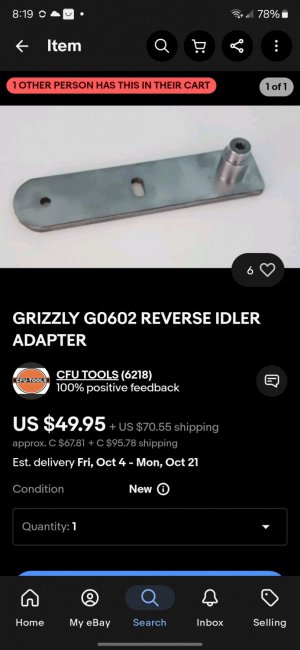That seems like a neat idea. Are there any limitations on thread pitch? I.E. can you do barrel riffling? Multiple start, very long pitch.
Thread pitch is not limited by the ELS per sue. It's more limited by spindle speed and torque. I didn't design my ELS for barrel rifling. I'm sure there's some significant tradeoffs, but I've not reviewed them as my application was different. For any pitch, there's a ratio between the spindle angle and the lead screw angle. Need a different pitch, it's just a different ratio. Or at least that is how I implemented it in my software. My code is independent of spindle speed, but obviously one needs to take into account the limitations of one's platform, be it your spindle drive, or the encoders you chose.
It's very possible to do multi start. In full disclosure, it's on my to-do list, but I haven't made much headway on it, due to dealing with life's distractions. I have nearly all the information necessary to implement it since my ELS is connected to my DROs as well as a spindle encoder.
A multi start simply means an advancement of the spindle angle relative to the previous spindle angle at the start of the cut (with the same pitch ratio). It can be implemented several ways, but I have yet to figure out which one will be easier to implement without tearing up all my previous work.
Pitches like a barrel correspond to a very high amount of lead screw movement as compared to spindle movement. On my lathe I don't have a back gear, my minimum spindle speed is 100 RPM. The carriage speed would be frighteningly fast. I'd want to put it both hardware and software safety stops to avoid high speed crashes. Or I'd do that and modify the spindle drive to run at 1 RPM! I'd also need to review my stepper characteristics to see if it could deliver the required torque at that step rate.
So theoretically possible, but it probably requires a whole different set of requirements on the whole system as compared to simple feeding and threading. I can tell you from experience that 4TPI is awfully fast and scary at 100 RPM near a hard stop, like your chuck. Really have to be on your game that day!

